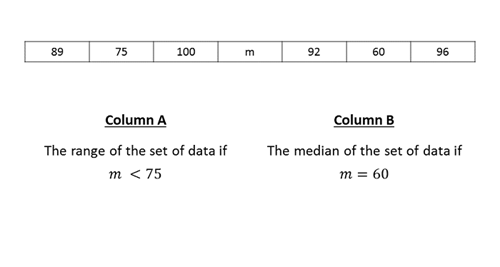What is the SCAT for Advanced Students?
The School and College Ability Test (SCAT) Advanced is a prestigious assessment administered by Johns Hopkins Center for Talented Youth (CTY) specifically designed to identify academically gifted students in grades 6-8. Unlike traditional grade-level tests, the SCAT Advanced challenges middle schoolers with high school-level content (grades 9-12), making it one of the most rigorous talent identification tools available.
Free SCAT Advanced Practice Questions with Expert Tutor Tips
Advanced SCAT:
- Target Grades: Students currently in grades 6, 7, and 8 (and sometimes higher, depending on the program).
- Content Difficulty: The questions are typically based on material found in grades 9-12 (high school) curricula.
- Verbal: Features sophisticated vocabulary and complex analogical reasoning.
- Quantitative: Covers a broader range of high school math topics, including algebra I & II concepts, functions, more complex geometry, probability, and statistics, all within the comparison format.
Verbal reasoning questions all have the same instruction
Each question begins with two words. These two words go together in a certain way. Under them, there are four other pairs of words lettered A, B, C, and D.
SCAT Verbal Reasoning Sample Question 1- Advanced Level
dubious : suspicion ::
TestPrep-Online Tutor's Tip:
"I always tell my students to first identify the relationship type. Here, 'dubious' means doubtful, which causes suspicion. Look for the same cause-and-effect pattern. 'Entertaining' causes amusement - that's your answer! Avoid trap choices like B and C where the relationship is opposite."
SCAT Verbal Reasoning Sample Question 2- Advanced Level
Find the lettered pair of words that go together in the same way as the first pair of words.
cartographer : map ::
TestPrep-Online Tutor's Tip:
"This is a creator-to-creation relationship. A cartographer creates maps. I teach students to ask: 'What does this person make?' A choreographer creates dance routines. Don't fall for A - a sculptor uses a chisel but doesn't create it. The relationship must be producer to product!"
SCAT Verbal Reasoning Sample Question 3- Advanced Level
Find the lettered pair of words that go together in the same way as the first pair of words.
erudite : ignorant ::
TestPrep-Online Tutor's Tip:
"Perfect antonym question! 'Erudite' means learned/scholarly, opposite of ignorant. I coach students to immediately think 'opposite' when they see this pattern. 'Affluent' (wealthy) and 'impoverished' (poor) are perfect antonyms. Choices A, B, and D are all synonyms - classic wrong answer traps!"
Boost Your Child's SCAT Grade with the Appropriate SCAT PrepPack!
Explore our SCAT Practice Packs with Tests, Quizzes and Expert Tips
Quantitative reasoning questions all have the same instruction.
Each of the following questions has two parts. One part is in Column A. The other part is in Column B.
You must find out if one part is greater than the other or if the parts are equal.
Then, choose one of the four answers below:
A if the part in Column A is greater
B if the part in Column B is greater
C if the two parts are equal
D if not enough information is given for you to decide
SCAT Quantitative Reasoning Sample Question 1- Advanced Level
Which column is bigger?

TestPrep-Online Tutor's Tip:
"I love teaching this concept! Students often overthink these geometry basics. Every triangle has exactly 180°, every square has exactly 360°. No variables, no tricks - just recall the fundamental rules. Column B wins every time. Master your angle sum formulas!"
SCAT Quantitative Reasoning Sample Question 2- Advanced Level
Which column is bigger?
| Column A | Column B |
| 3⁵ × 3² | 3⁸ ÷ 3 |
Choose one of the four answers below:
TestPrep-Online Tutor's Tip:
"Exponent rules are your best friend here! I teach the acronym 'MAID' - Multiply Add, Divide Subtract. Column A: 3⁵ × 3² = 3⁷ (add exponents). Column B: 3⁸ ÷ 3¹ = 3⁷ (subtract exponents). They're equal! Always simplify before comparing."
SCAT Quantitative Reasoning Sample Question 3- Advanced Level
Which column is bigger?
| Column A | Column B |
| 40% of 85 | 75% of 40 |
Choose one of the four answers below:
TestPrep-Online Tutor's Tip:
"Mental math strategy! I teach students to convert percentages strategically. 40% of 85 = 0.4 × 85 = 34. For 75% of 40, think 'three-quarters of 40' = 30. Column A wins! Practice these conversions until they're automatic."
Advanced SCAT PrepPack
Boost Your Child's Advanced SCAT Scores!
Explore our Advanced SCAT Practice Packs with Tests, Quizzes and Expert Tips.
Whatever the results on the test end up being, the score reports you receive after your child takes the SCAT can give you a far better understanding of where his or her academic strengths and weaknesses lie.
SCAT Advanced: Practice Tests for 6th-8th Grade
To succeed on the Advanced SCAT Test, it is important for your child to be properly prepared. To help your 6th-8th grader’s preparation process, TestPrep-Online offers its Advanced SCAT Test Preparation Packs. All of TestPrep-Online’s SCAT practice material is designed to simulate testing conditions as much as possible, while still offering user-friendly practicing material, and an opportunity to study online at a pace that best suits your child’s needs.
About the Advanced 6th-8th Grade SCAT
The SCAT is administered by the Johns Hopkins Center for Talented Youth (CTY) to identify students eligible for its advanced academic programs. Students in grades 6-8 take the Advanced SCAT, which is normed against students in grades 9-12.
High SCAT scores at the advanced level can be used to apply to John Hopkins’ Talented Youth Programs after completion of 7th grade, since it is not necessary to take the same SCAT exam every year.
Benefits:
- Qualification for elite college preparation programs
- Placement into advanced/AP courses in high school
- Development of college-level analytical thinking
- Enhanced college application profile
- Preparation for collegiate academic rigor
- Potential scholarship opportunities
Advanced SCAT Test Format & Content
Advanced SCAT Test Format & Content
- 55 multiple-choice questions per section (Verbal and Quantitative)
- 22 minutes per section, with a 10-minute break between them
- Administered via computer
Read more about test registration on our SCAT Registration FAQ page.
Seven Tips for Preparing for the Advanced SCAT
- Understanding the question types: The SCAT measures verbal and quantitative reasoning abilities through two 22-minute sections. Preparation should focus on understanding and practicing verbal analogies (identifying relationships between pairs of words) and mathematical comparisons (determining the relationship between two quantities).
- Developing strong reasoning skills: The SCAT emphasizes logical thinking over rote memorization. Therefore, strategies that enhance analytical and logical reasoning will be beneficial.
- Expanding vocabulary: For the verbal analogies section, expanding vocabulary through reading and understanding roots and affixes is important.
- Mastering fundamental mathematical concepts: Success in the mathematical comparisons section requires mastering fundamental mathematical concepts across various topics such as arithmetic operations, algebra, geometry, and data analysis.
- Utilizing practice tests: While the sources specifically mention official SCAT sample questions, they also note that numerous external resources offer practice tests, study guides, and tutoring services tailored to the SCAT. Practicing with these materials can help students become more comfortable with the test format and pacing.
- For older students (relevant to the Advanced SCAT), preparing for the PSAT 8/9, SAT, and ACT can serve a dual purpose of achieving CTY eligibility and providing valuable practice for future standardized testing. Effective preparation for these tests involves familiarizing oneself with the format and content, using official practice tests, and building fundamental skills in reading comprehension, writing, and mathematics.
- Use SCAT Advanced practice tests. Using practice tests is a great way to reduce anxiety on the day of the actual test. By supplying practice tests during your prepping time, your child will become more accustomed to the testing format, and will therefore not be taken aback by the actual exam questions when s/he sees them.
Learn more about Elementary and Intermediate SCAT testing.
Family Membership
Access ALL test prep materials
Frequently Asked Questions
The SCAT Advanced is unique because it presents high school-level content to middle school students, specifically designed to identify the top 3-5% of academic performers. Unlike grade-level assessments, it measures reasoning ability rather than curriculum knowledge.
Absolutely! High SCAT scores often lead to advanced course placement, gifted program admission, and can strengthen college applications by demonstrating exceptional academic ability.
The SCAT provides valuable insight into your child's academic strengths regardless of CTY eligibility. Many families use results to guide educational planning and identify areas for enrichment.



